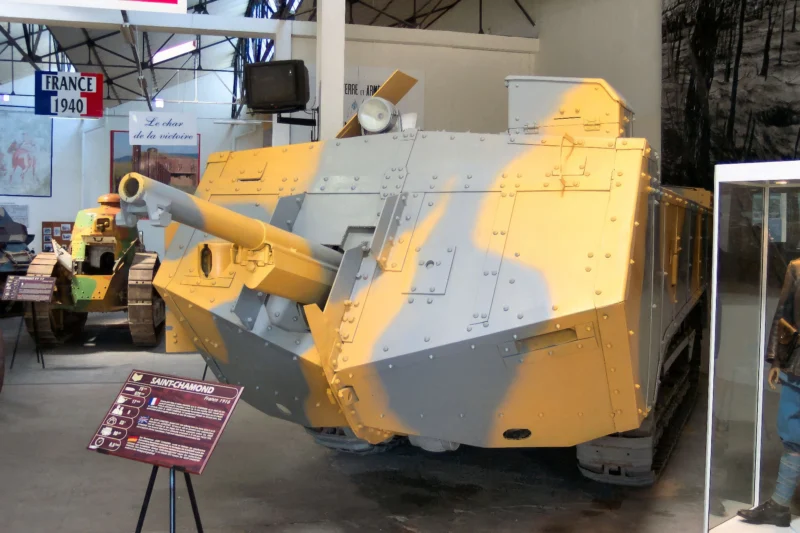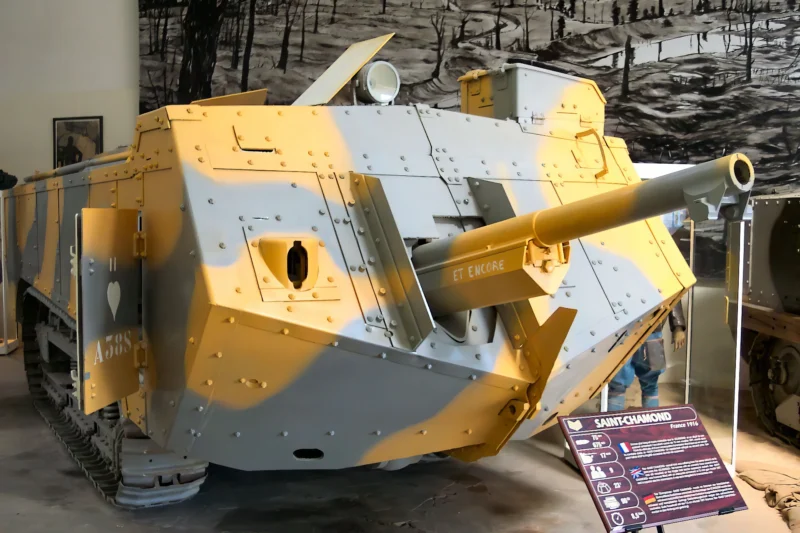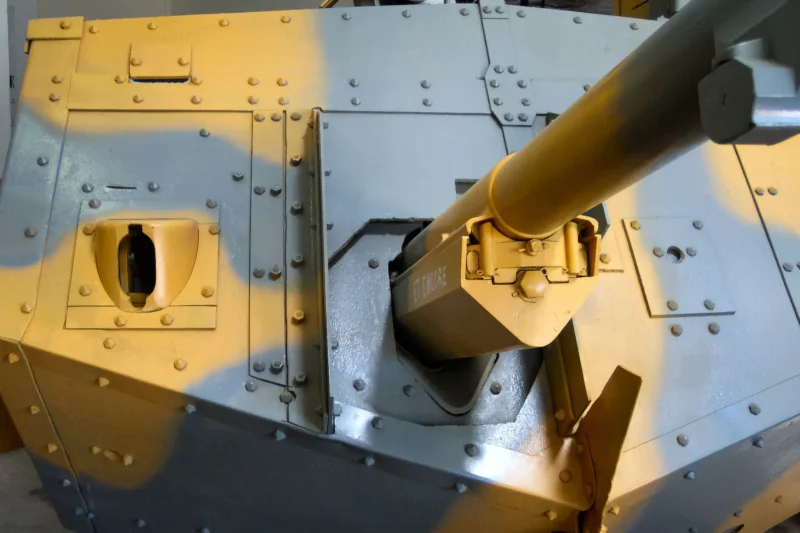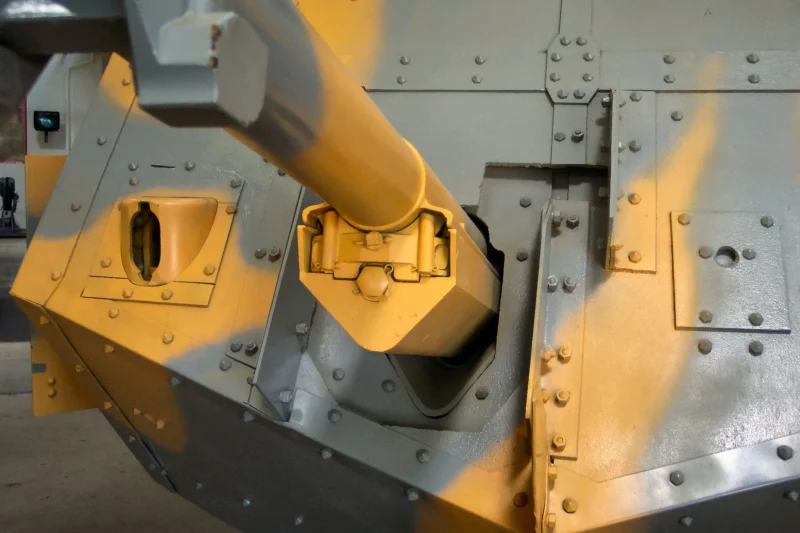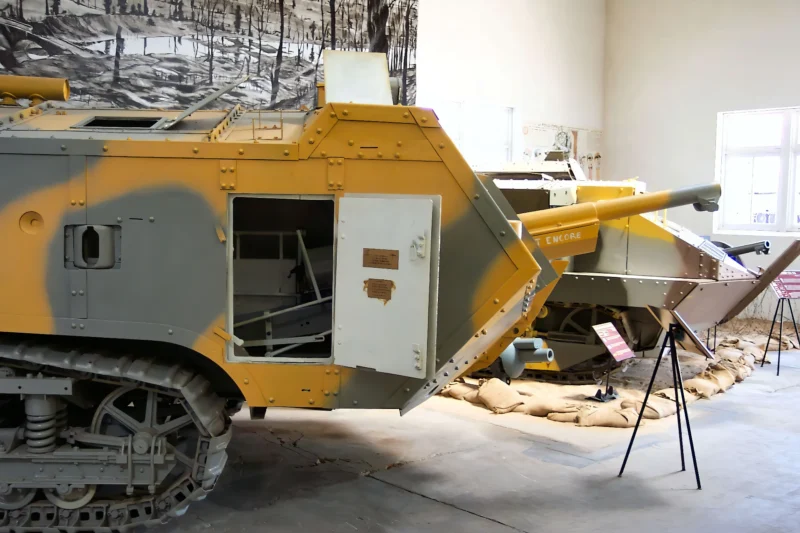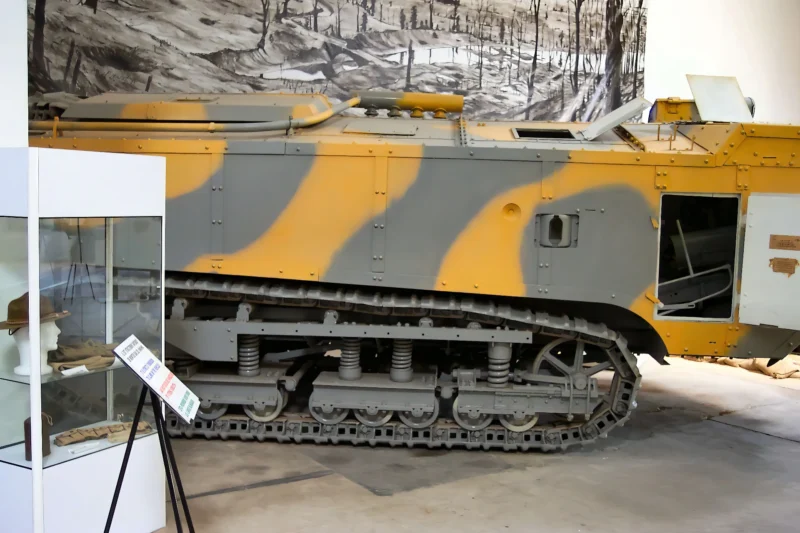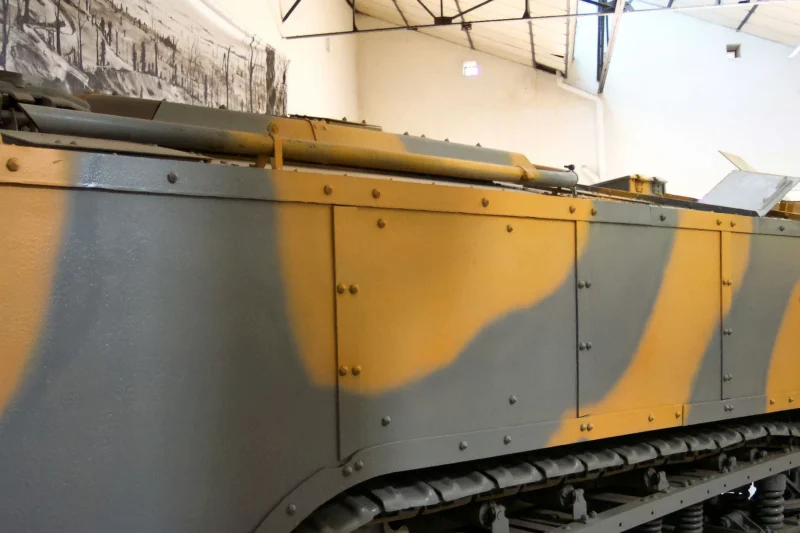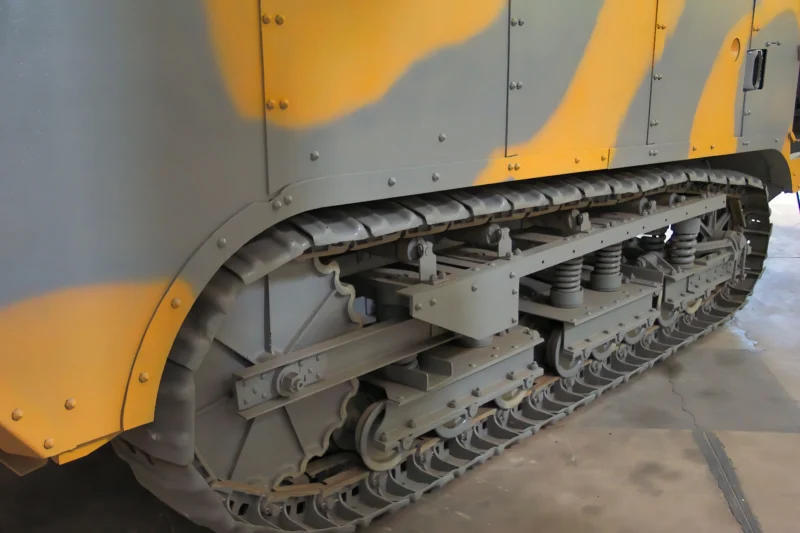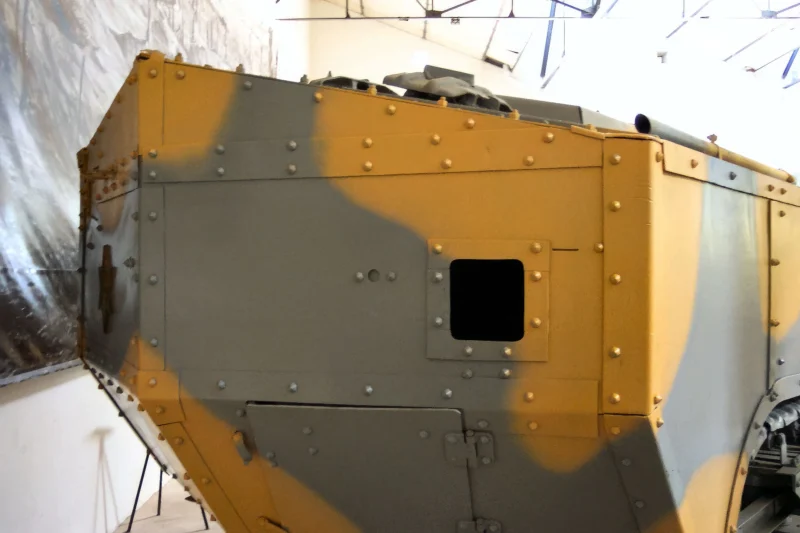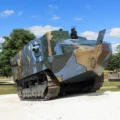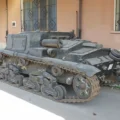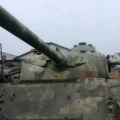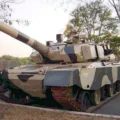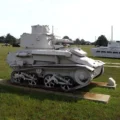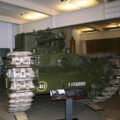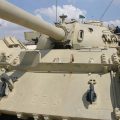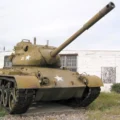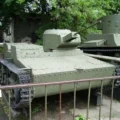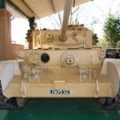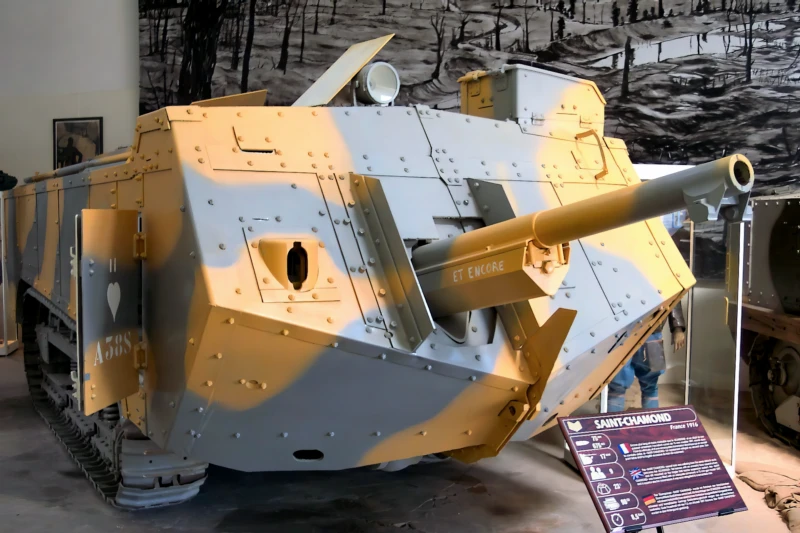
Saint Chamond | |
|---|---|
| Državi | Francija |
| Vrsta | Srednje tank |
| Masa | 23 ton |
V Saint-Chamond je bil drugi francoski težki tank prve svetovne vojne, saj jih je bilo 400 izdelanih od aprila 1917 do julija 1918. Čeprav ni tank po sedanji definiciji, je splošno sprejet in opisan kot tak v zvezi z zgodnjim razvojem tankov. Rojen iz komercialnega rivalstva, ki je obstajalo z oblikovalci tanka Schneider CA1, je bil Saint-Chamond pod močjo in bistveno neustrezna zasnova. Njena glavna slabost je bila Holtova gosenica. Bili so veliko prekratko glede na dolžino in težo vozila (23 ton). Kasnejši modeli pa so poskušali popravek nekaterih originalnih pomanjkljivosti tanka z namestitvijo širših in močnejših tirnih čevljev, debelejšim čelnim oklepom in učinkovitejšim 75mm Mle 1897 terensko pištolo. Skupaj je bilo zgrajenih 400 tankov Saint-Chamond, vključno z 48 neoboroženimi caisson tanki. Tanki Saint-Chamond so ostali v različnih akcijah vse do konca poletja 1918, z zamudo postajali učinkovitejši, saj se je boj izselil iz jarkov in na odprta tla. Sčasoma pa naj bi tanke Saint-Chamond v celoti nadomestili uvoženi britanski težki tanki.
| Saint Chamond – WalkAround | |
|---|---|
| Fotograf | Unknow |
| Lokalizacijo | Neznano |
| Fotografije | 68 |
| Saint Chamond – WalkAround | |
|---|---|
| Fotograf | Unknow |
| Lokalizacijo | Neznano |
| Fotografije | 47 |
Overview and Context
The Saint-Chamond was the second French heavy assault tank to enter service during World War I, with approximately 400 units produced between 1917 and 1918. Born out of industrial rivalry with the manufacturers of the first French tank (the Schneider CA1), it was an ambitious but deeply flawed design.
Its primary goal was to bring the firepower of a potent artillery piece, the French 75 mm field gun, directly against enemy trenches and fortifications.
Zasnova in specifikacije
- Shape and Hull: It had a long, boxy superstructure with significant overhangs at both the front and rear of the vehicle, extending well beyond the relatively short, narrow tracks. This gave it a massive, ungainly silhouette.
- Main Armament: A long-barreled 75 mm gun (either the Saint-Chamond L12C TR or the standard Mle 1897 field gun in later versions) was rigidly mounted in the front of the hull, offering only a very limited traverse.
- Secondary Armament: Four 8 mm Hotchkiss machine guns, one mounted in each side (front, rear, left, right).
- Propulsion: The tank used a complex and innovative petrol-electric transmission system (Crochat-Colardeau). A 90 hp Panhard engine drove a generator, which in turn powered two electric motors linked separately to each track. This allowed for smooth steering but was heavy and prone to overheating and mechanical issues.
- Crew: The tank typically required a large crew of eight to nine men.
- Armor: Initially thin, with maximum armor plating of around 11.5 mm on the front and 8.5 mm on the sides. Later models increased side armor to 17 mm and added a spaced layer to the front to resist German armor-piercing bullets.
Combat Performance and Flaws
Despite its powerful main gun, the Saint-Chamond was plagued by critical operational deficiencies:
- Trench Crossing: The overly long hull combined with the relatively short track length and heavy forward weight caused the tank’s nose to violently dig into the ground or get irrevocably stuck in trenches and shell craters, making it notoriously poor for traversing the scarred terrain of the Western Front.
- Underpowered: The 90 hp engine was inadequate for the tank’s operational weight of around 23 metric tons, severely limiting its cross-country speed and agility (top speed was only about 8-12 km/h).
- Vulnerable: Its thin side armor left the crew vulnerable to heavy machine gun fire, a major issue that was only partially addressed in late-production models.
The Saint-Chamond remained in service until late 1918, mostly performing as a samohodna pištola or being converted into unarmed supply/recovery vehicles, as it was eventually superseded by the more reliable and tactically superior Renault FT light tank and imported British heavy tanks.
Views : 4365
